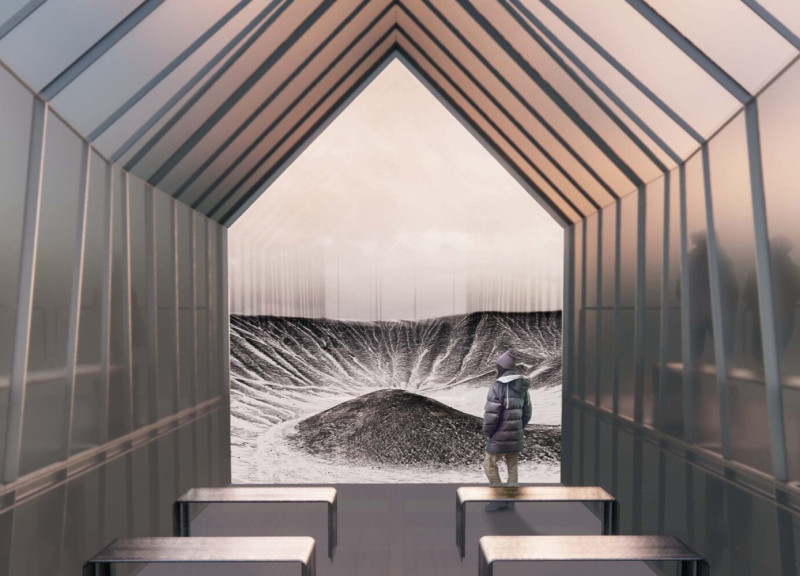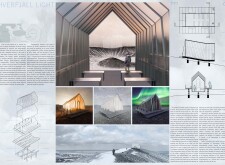5 key facts about this project
The architectural approach centers on transparency and materiality, employing glass extensively to facilitate unobstructed sightlines and to invite natural light into the interior. The shelter's form is defined by an angular roof that reflects the terrain’s undulations. This integration with the topography is paramount, as it minimizes the structure's visual impact and reinforces the connection between the architecture and its environment.
Design Elements and Materials
The building utilizes a selection of materials that support its functional and aesthetic goals. The primary materials include glass, steel, wood, and concrete. Glass is predominant in the facade, allowing for expansive views while also contributing to the building's energy efficiency. Steel is integral to the structure's stability, especially given the seismic activity characteristic of Iceland. Wood is employed for interior elements such as benches and surfaces, promoting warmth and comfort for visitors. Concrete serves as a robust foundation, ensuring long-term durability amidst Iceland's challenging climate conditions.
Unique Design Features
Hverfjall Light distinguishes itself through its strategic orientation and immersive design. The shelter is oriented 10 degrees east of north, directing visitors' focus towards the crater, thus enhancing their experience of the landscape. Additionally, the design considers the dynamic lighting conditions prevalent in Iceland. The architecture accommodates both the soft light of dawn and the vibrant hues of sunsets, encouraging visitors to engage with the environment throughout the day and night.
This project also emphasizes sustainability through low-impact construction techniques and the use of local resources. The careful material selection and orientation not only create a visually cohesive structure but also reduce energy consumption and the ecological footprint.
Visitor Experience and Interaction
The interior layout is intentionally open and adaptable, allowing for a variety of uses, including educational programming and quiet contemplation. Seating arrangements are designed to foster engagement with the views outside, positioning visitors as active participants in the landscape rather than passive observers. This design philosophy reinforces the project's purpose as a center for education and appreciation of Iceland's unique geological features.
Hverfjall Light serves as a case study in combining architectural clarity with contextual sensitivity. For more information and a deeper understanding of its architectural plans, sections, and design elements, readers are encouraged to explore the project presentation. The architectural details provide valuable insights into the project's intentions and execution, offering a thorough perspective on this distinctive design endeavor.























